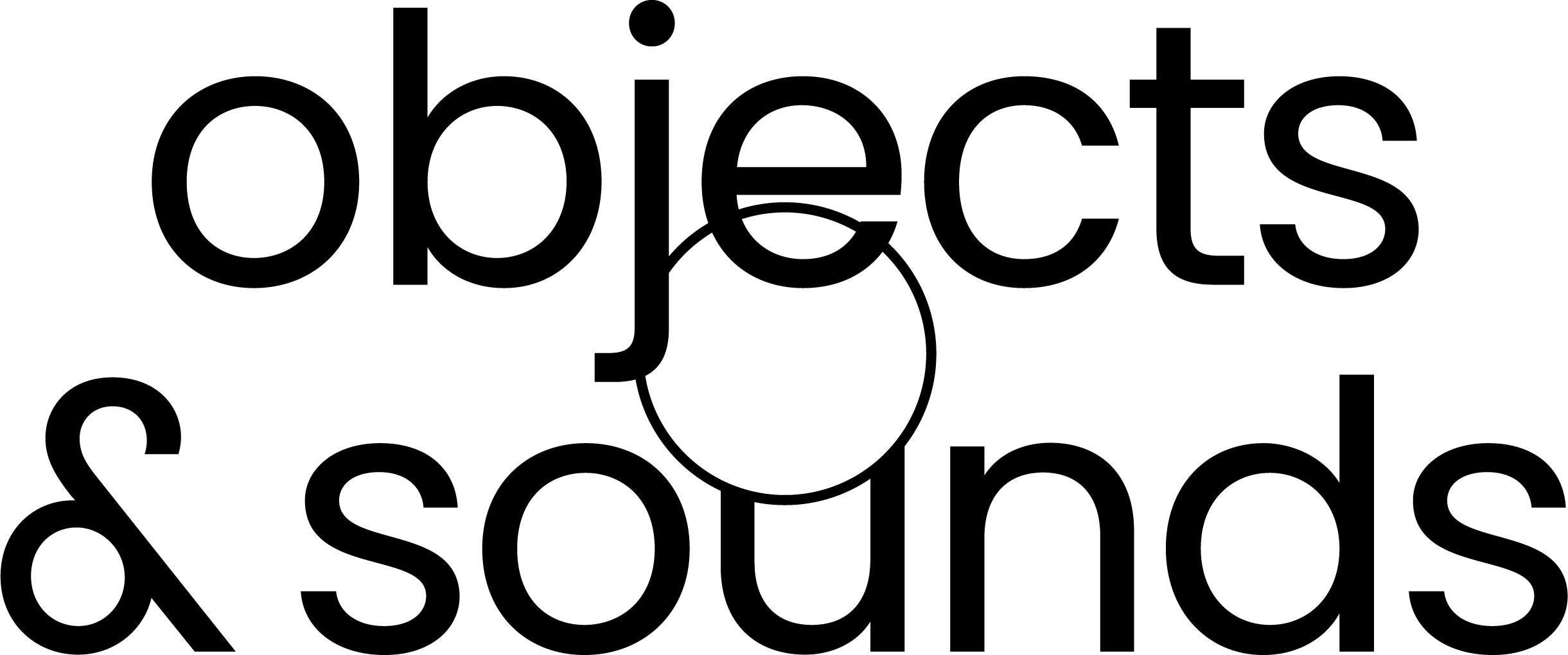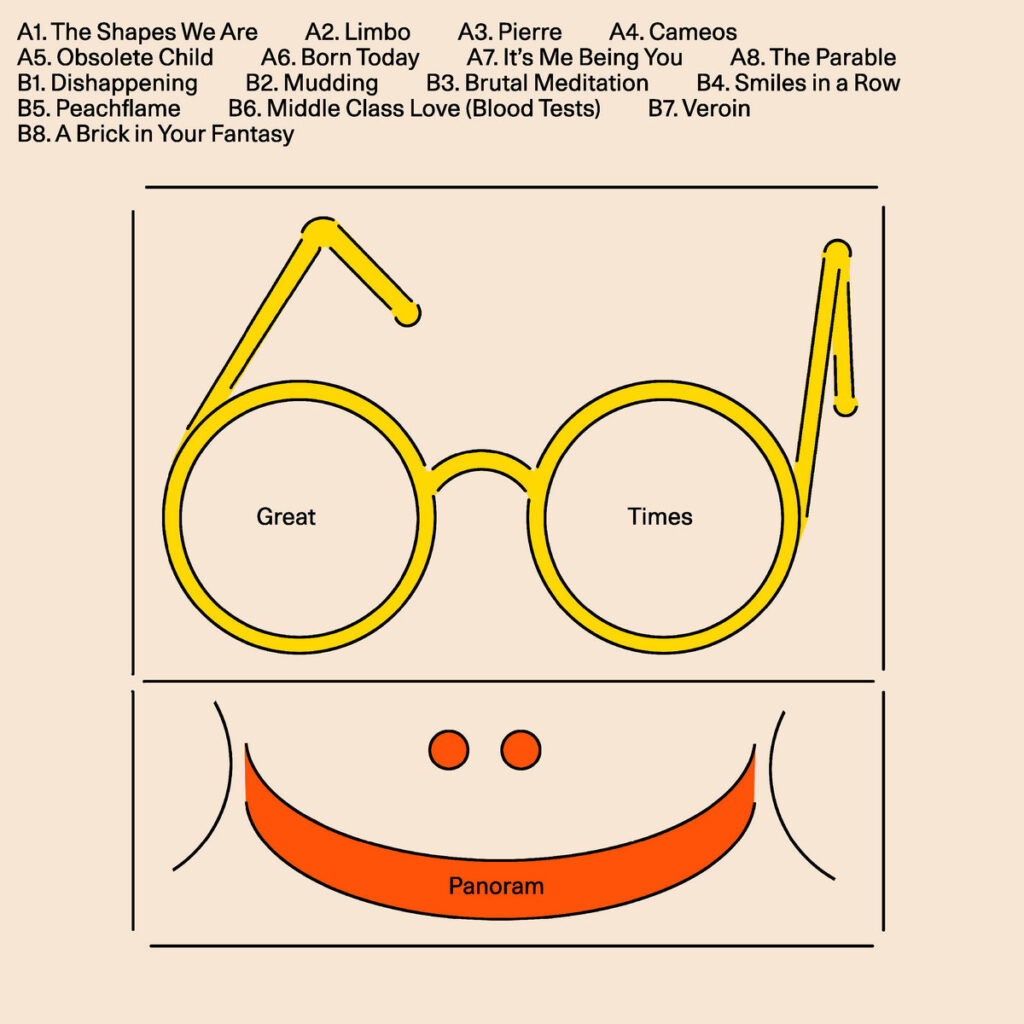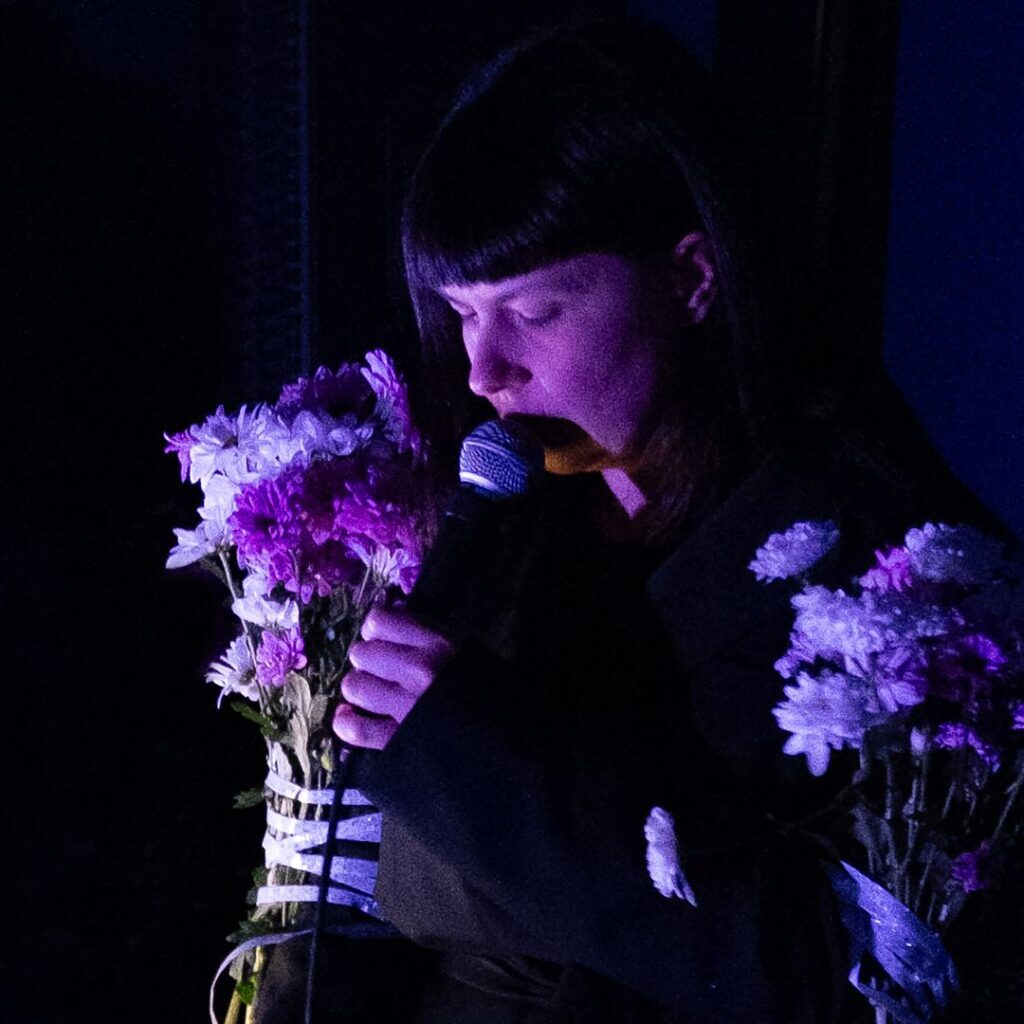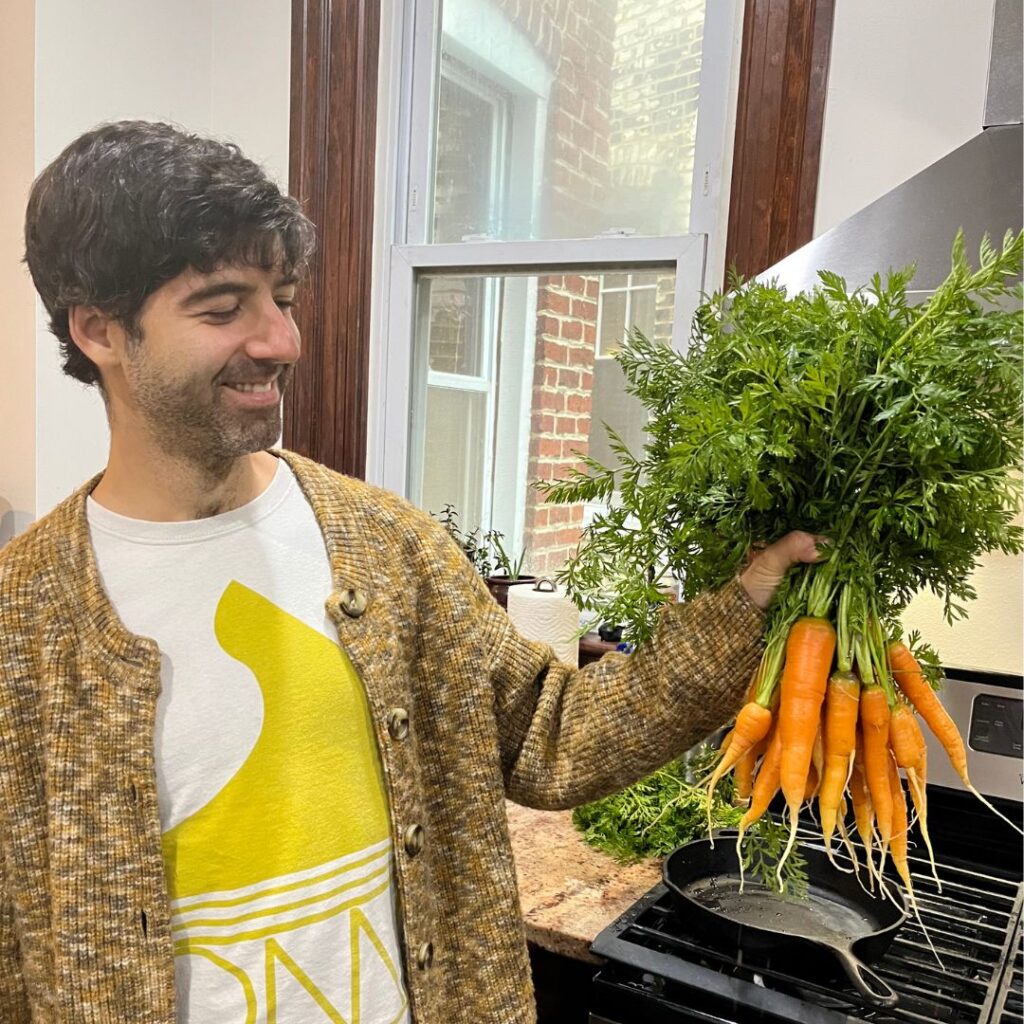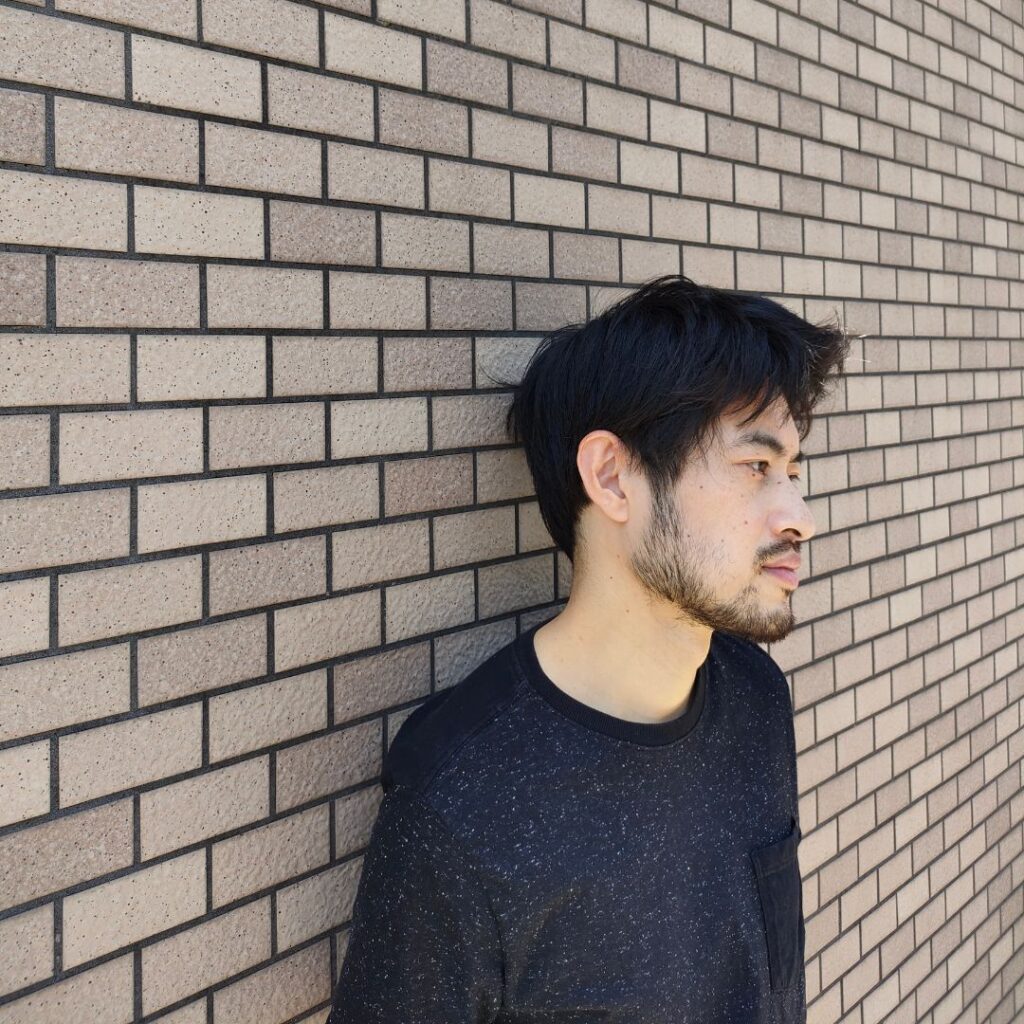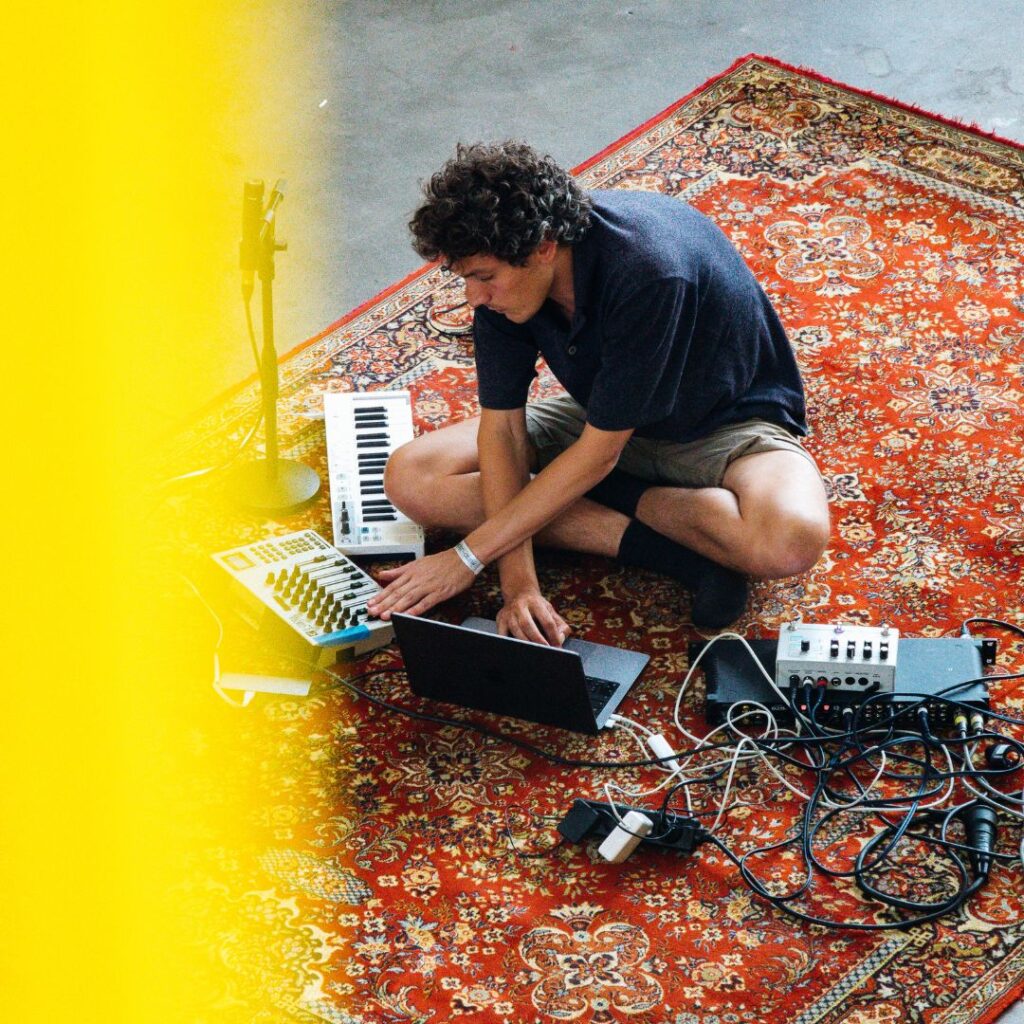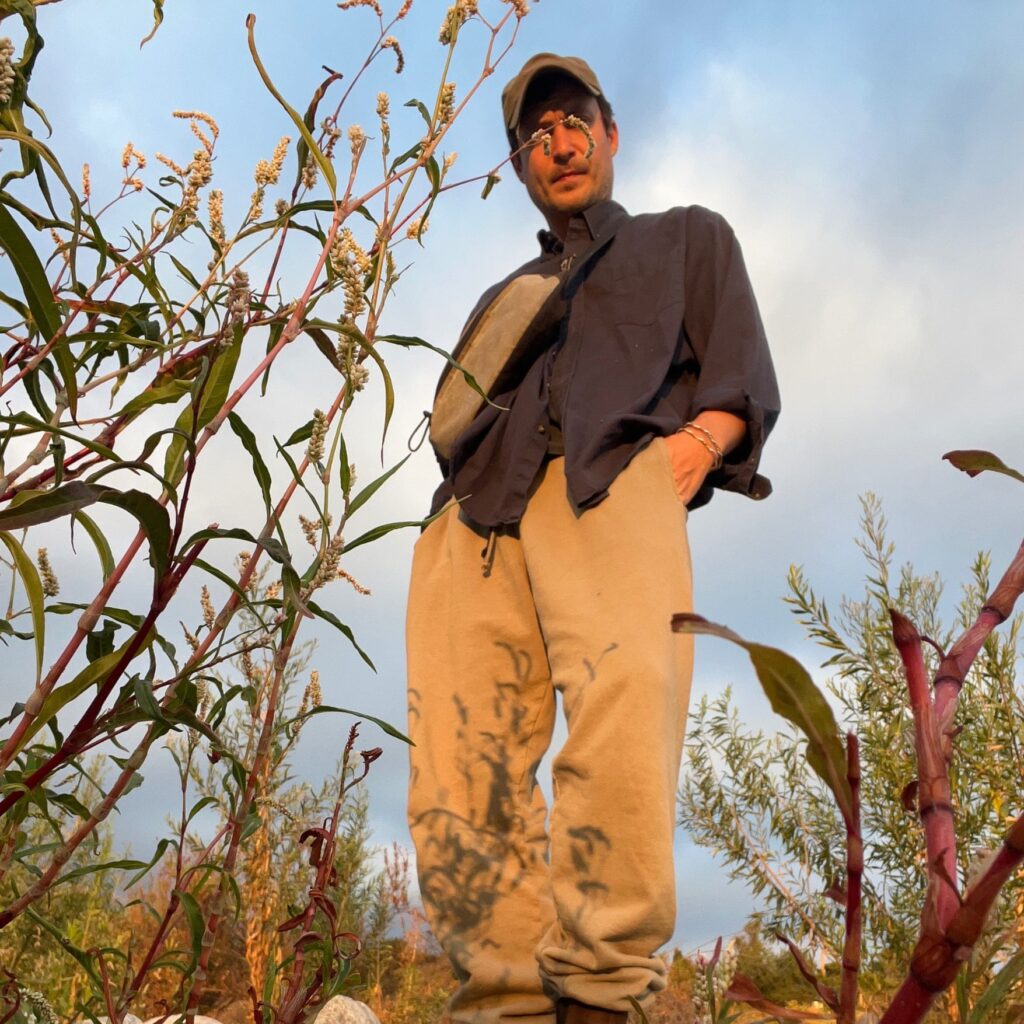Embracing the curveballs with Balmat
While many labels start with a particular idea, image, and sound in mind, Balmat embodies the joy of incrementally piecing an identity together. Founded by friends Albert Salinas and Philip Sherburne, the label has become home to a constellation of sounds that, while brimming in their own musical worlds, have an inexplicable cohesion.
Speaking with Albert and Philip highlighted the fun that comes with a blank canvas and coloring in between the lines as you go. We enjoyed getting to know the label a bit better and meeting its founders who, like the sounds they release, carry a gentle warmth—the kind of humbleness of those who appreciate the journey and seeing where it incrementally takes them.
Was there a specific moment in time that you both recall wanting to start a label together?
Philip: Yeah, it actually came out of a very specific moment. Albert and I do Lapsus Radio, which is a long-running electronic music radio show that used to be on Radio 3, a Spanish national public broadcaster. These days we’re independent and on Mixcloud and Patreon.
We have both been listening to ambient and experimental music for years, and even on the radio show, we had a habit of starting the show kind of mellow and gradually increasing the intensity. But in 2020 during the pandemic, like so many people, we were gravitating even more towards ambient music. Our radio shows started becoming more heavily ambient-based, much more than we previously had been doing.
And at some point Albert was like, “You know, we should think about doing a record label related to this stuff.” Is that correct, Albert?
Albert: Exactly. That’s the story. It was the result of the pandemic, and here we are.
The first release on Balmat was Luke Sanger’s Languid Gongue. What made you choose this particular album to launch the label?
Albert: I discovered Luke Sanger through Discos Paradiso, a record store in Barcelona. I shared the album with Philip, and the feedback was great from both sides, so we thought okay, let’s try to reach Luke. He was super active and productive from the beginning and shared with us 40 tracks that we had to narrow down into the tracklist.

40 tracks, wow!
Philip: Right (laughing)?! It was a very editorial process, because it was very much about whittling things down and finding a through-line, striking a balance between the rhythmic and the abstract. I also think that while Albert and I have overlapping tastes, we gravitate towards slightly different things, so it was finding that balance, as well.
Albert: I don’t know if Luke Sanger was aware that the selection of the first tracklist was an exercise of defining the sound of the label. It was like, okay, we have 40 tracks here, and we have to define what Balmat will be in the future. It was a challenging thing, but that started this adventure of an ambient-adjacent label with a non-ambient first release.
It’s the perfect exercise for launching a label. Do you feel that there is a certain aesthetic of sound that you aim to curate?
Philip: I would say no, actually. I think we keep surprising ourselves by putting out things that we wouldn’t have expected to put out, necessarily.
Hoavi’s, which was the second release, was kind of dub techno and ambient, while Patricia Wolfe’s album was a classic ambient, melodic, and tonal release. nueen’s album was a little more abstract, but all three of those early releases fall within this general ambient world. But then it started shaping out a little differently. µ-Ziq’s album was totally unexpected, and Ylia’s was a sound that we hadn’t really anticipated. I mean, there’s guitars on it, but I was like, oh, this actually kind of makes sense somehow.
The real curveball to me was the Anagrams record, which was Shy Layers and saxophonist Jeff Crompton, both from Atlanta. I had reviewed Shy Layers for Pitchfork years ago, and we stayed in touch. He just sent me music and asked, “Can you think of any labels that might be into this?” I was like, well, actually I can (laughing). I sent it to Albert, and I didn’t think he was going to go for it, because it seemed to me so far afield from everything that we had done until that point. It’s got saxophone and grooves—it’s kind of a jam band. It seemed like such an unexpected choice, and yet, it somehow worked.
The sounds on Balmat cover a wide spectrum, it sounds like.
Albert: Yeah, I think that’s because we’re really passionate about the sounds behind electronic music, and I think we are realizing that Balmat is also a really good label for putting out sounds that are adjacent to ambient.
In my case, I am super passionate about Black music, such as soul and jazz. In the Anagrams album, you can hear some of that influence. But then the Panoram album is like the opposite side of the spectrum. It’s more brain-dancy, or something related to ‘90s Warp and Rephlex, but with a new form.
It’s kind of like digesting all of the music that we’ve been listening to over the decades and trying to condense it into an ambient discourse.
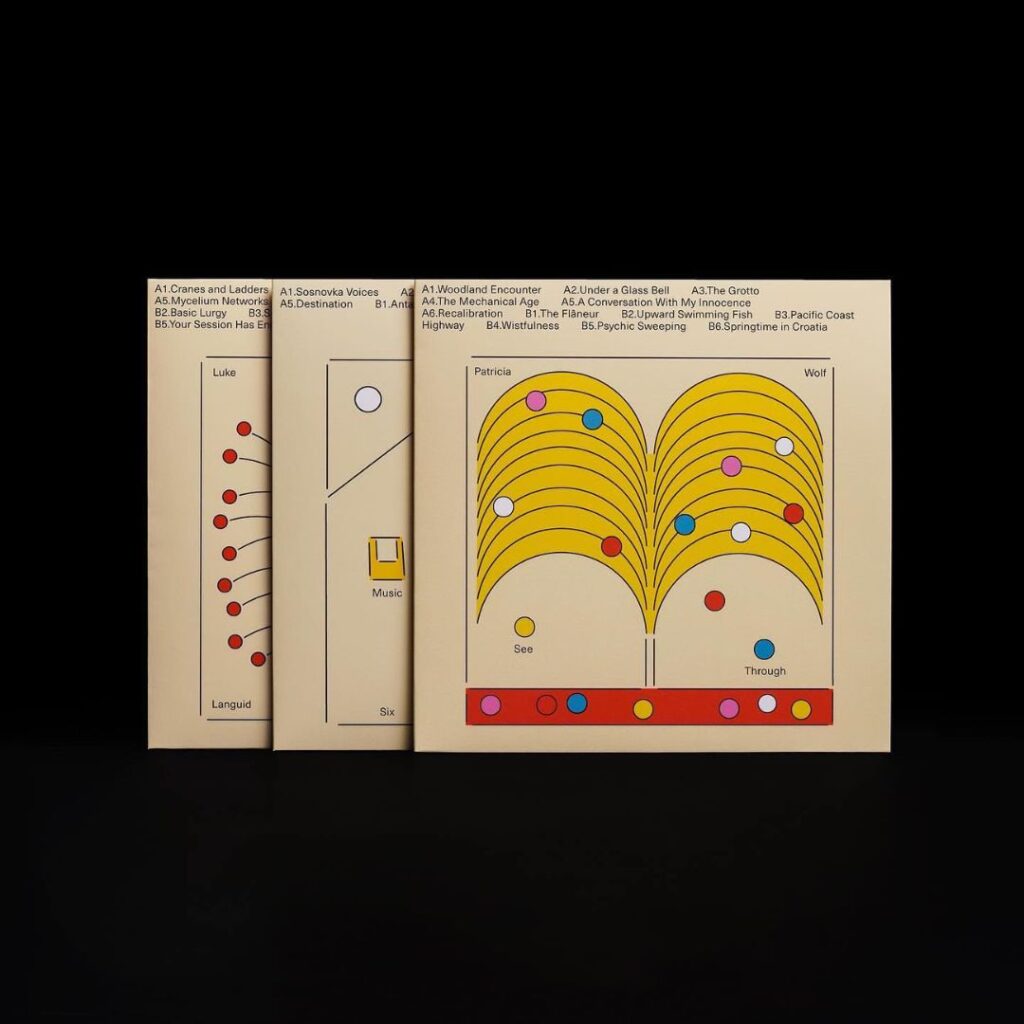
With such a diverse sound palette, how do you maintain a cohesive identity?
Albert: The aesthetic plays a big role here. Josep Basora of the design studio Basora is the designer of the label. We shared with him the idea of starting Balmat, and he had a strong idea from the very beginning that Balmat had to be linked to a super specific illustrator or identity. He proposed working with José Quintanar, a Spanish illustrator now living in Amsterdam.
The cloud logo was conceived by Josep, and he helped set the aesthetic and design approach for Balmat, also linking us to the universe of José Quintanar. I never imagined that the aesthetic could have such an important role on the label. I think people are collecting the records not only for the sound, but also for the artwork, because they look good.
Philip: It’s really fun and challenging because we have a pool of José’s pieces that we can choose from when we’ve got a new release coming up, and then we decide which artwork fits the music. It’s funny how you can end up drawing these connections that end up making sense.
What are some examples of the connections you’ve drawn between the sound and visual components?
Philip: With Luke Sanger’s upcoming release, we ended up using a piece that extends visually from the cover of his first album. The artwork has this kind of tree with fruit falling off of it that really encapsulated the title, Dew Point Harmonics, in terms of moisture and plants and things like that.
The Panoram album also has a funny, kind of sarcastic cover. We thought that it really suits the weird sense of humor that Panoram has.
The covers match the music so well, I’m surprised they’re not custom.
Philip: Only one piece is custom so far, and that was for the Coral Morphologic and Nick León record, Projections of a Coral City. They wanted something that represented coral, and we didn’t have anything that suited what they were doing, so José made something for it, and I’m super thrilled with what he came up with.
Albert: Yeah, it’s also one of my favorites. Before, whenever we started collaborating with an artist, we would tell them that they could pull artwork from José Quintanar’s back catalog. But now José is eager to create new illustrations for the releases because he’s really into the label.
It seems like the music always comes first. Could you ever see it the other way around, where the artists respond to one of his pieces?
Philip: That would be cool if it came to that. We would welcome that, absolutely.
Albert: It’s an interesting period, because we just announced the second Luke Sanger release at Balmat, and more artists will re-release again on the label very soon. We’re curious to see how this will change the artists’ processes of producing, because now they are producing for a label that already exists and has a sound and visual aesthetic that exists. I think it’s challenging for an artist that wants to repeat on the label, because they have to determine if they want to keep feeding into the sound or completely alter their production processes.
That leads me to wonder, do you normally reach out to the artists, or do you mostly get demos?
Philip: It’s a mix. For the µ-Ziq album, Mike contacted us and said that he had been working on some ambient music that he thought would be a good fit on Balmat. He had too many things coming out on Planet Mu and wanted to put the music out somewhere else. It’s certainly a position I never saw myself in.
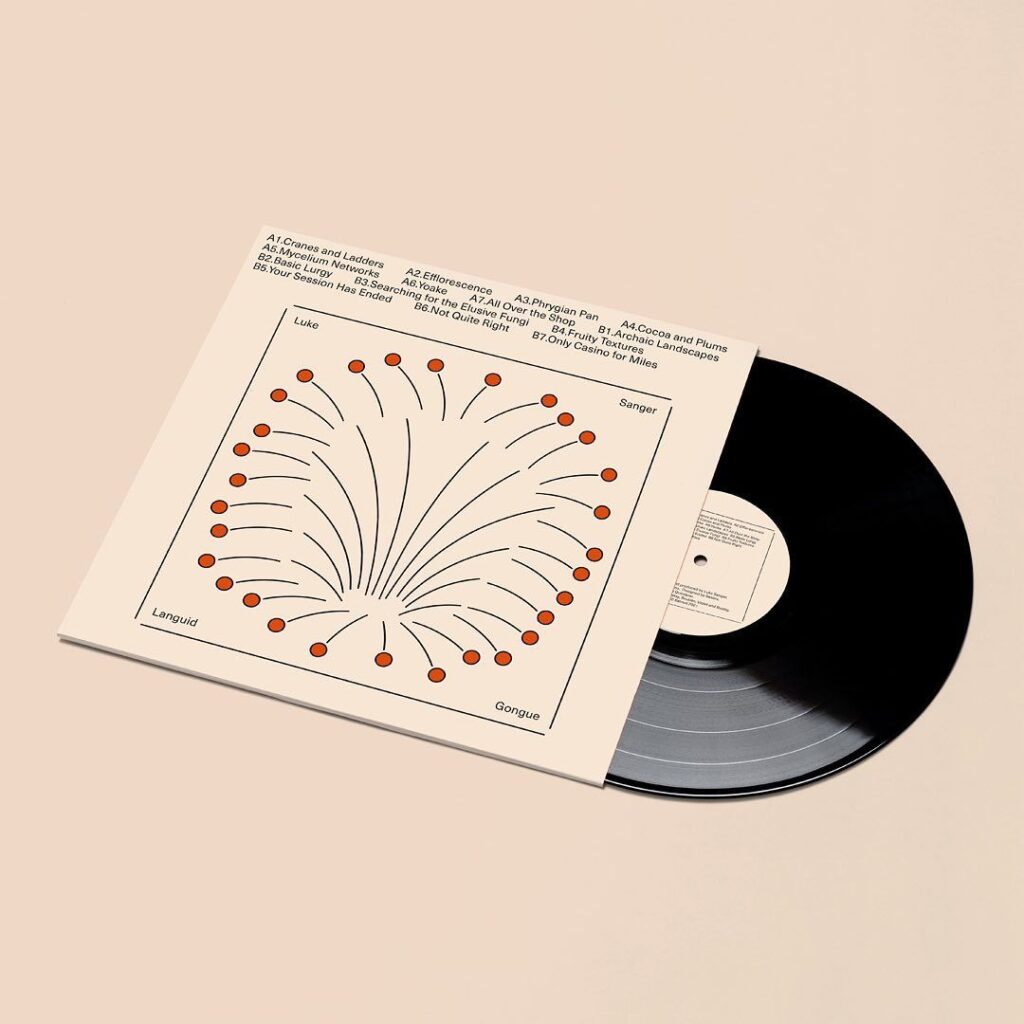
You also mentioned earlier that it was unexpected. What made it feel like a curveball?
Philip: It’s a curveball in the sense that Mike freaking Paradinas is releasing on a label that at that point in time had only put out four records! We couldn’t believe it. And stylistically, the album has this classic IDM sound, but there’s also this track “Houzz 13” that’s like a house track. It’s got a bassline; it’s got high hats; it’s got a beat—that was something that I don’t think we really thought we were going to be doing. It’s not an ambient track at all, but it made sense in the context of the album and rounded the album out.
Albert: And Mike already has Planet Mu. He can release whatever he wants on his own label, and the output on that label is absolutely great. For us, this was a moment of realizing, okay, if Mike is interested in releasing an album on Balmat, maybe we have to take this label as a serious thing.
That’s awesome. Bit of a pinch me moment, I can imagine. Do you have any dream collaborators or any directions you would love to see the sound gravitate towards at some point?
Philip: We would like to work with somebody from Latin America. There is some really interesting music coming out of the region. The +ambién label out of Quito is doing great stuff, and there are a lot of things happening in Bogotá—we haven’t really gotten any demos from there that I can think of yet, but that’s somewhere that we would really like to create more links with.
Are there any funny stories connected to the releases on Balmat?
Philip: There was this Panoram sample that was great, and we probably didn’t need to do anything about it, but out of an abundance of caution, we were like, “Could you re-record that or swap that out somehow?” The sample was from this children’s television show, and there was just no ambiguity around it at all (laughing).
Albert: Another funny incident happened when we were working on the Minor Science album. Angus was about to release a record at AD 93 with cover art that featured a clock. Around the same time we received José Quintanar’s back catalog for artwork options, and one of the pieces had a clock. He said, “Ok, two clocks in a row. Let’s do it.” It was serendipitous.
That’s a fun coincidence! You mentioned earlier that you sometimes have differing tastes or approaches. How would you describe those approaches?
Philip: I feel like I gravitate a little bit more towards the dark, drony, difficult stuff. I grew up on punk and hardcore. And for Albert, perhaps happier and more consonant. We’re a little yin and yang there.
Albert: I’m coming from a deep appreciation for Black music. A great portion of my record collection is soul, disco, house, jazz, and even pop. So, yeah, I would say that we have a good yin and yang, as well.
Philip: It’s interesting how these diverging paths can really find a middle ground.
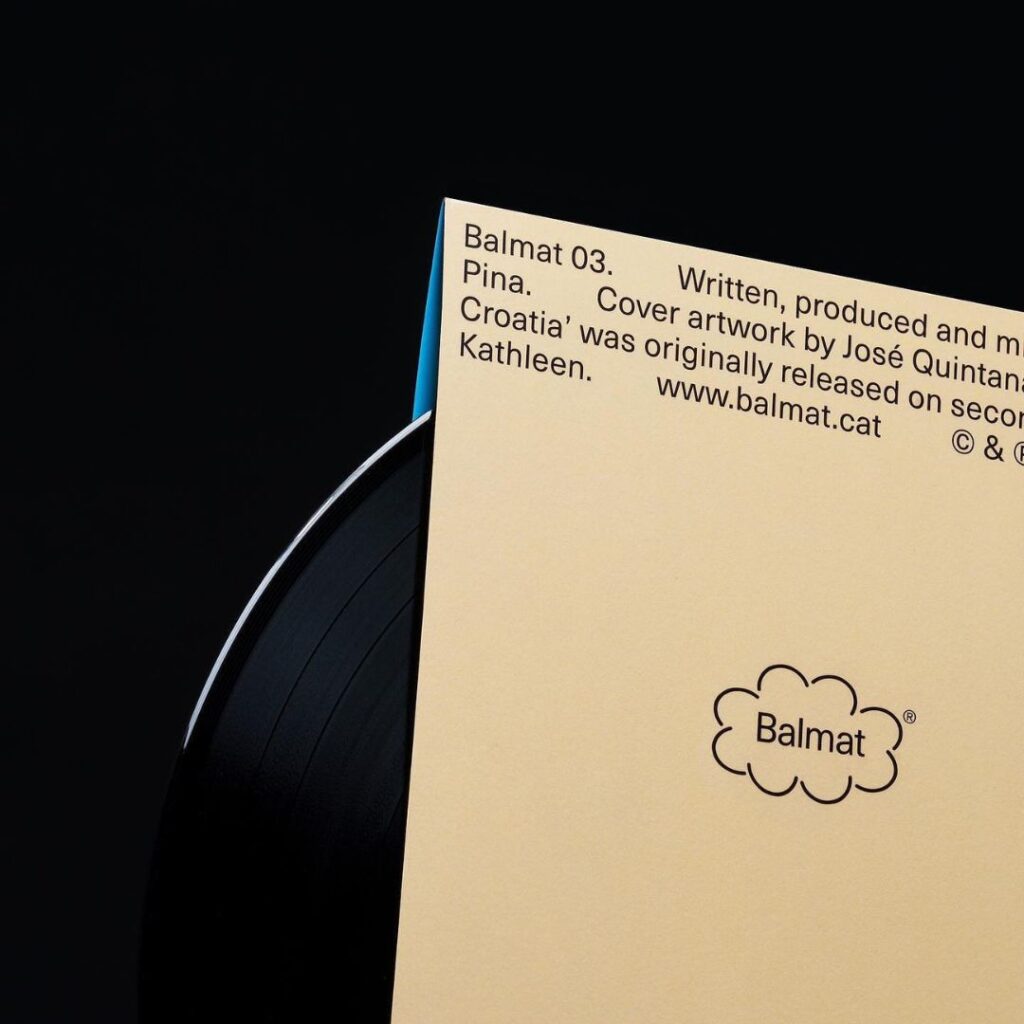
Absolutely, and especially one that feels natural. Is there a kind of a listening experience you hope to create for the audience, something you hope for the listeners when they put a Balmat record on or listen at home?
Albert: I’m not sure if we are expecting people to have some concrete experience. It’s for us simply about putting out music that we really enjoy and, at least in my case, I can listen to at home. My family is listening to the full Balmat catalog constantly, and maybe it’s a direct result of the pandemic, but I am really enjoying and being pulled towards music that sounds fitting to play at home. Perhaps Balmat is a way to translate or transfer this comfy feeling of being at home and being with your loved ones.
Philip: Everybody can come to Balmat on their own terms and in their own context. Both of us are very into home-listening music, but I think it’s also cool to see the ways that people sort of approach it or adapt it to other contexts. Like just this morning I woke up and saw an Instagram story from a friend of mine who has a bar in the desert in Death Valley, California, and he’s staying at a friend’s house that has a swimming pool. He took a little video clip of a pool robot going across and cleaning the bottom of the pool under the moonlight. He set it to a track from Bartosz Kruczyński’s Dreams and Whispers, and I was like, this is so perfect. It’s the opposite of putting vinyl on the turntable at home, but it totally works, you know? I like that adaptability, too.
Albert: It’s like the plastic bag scene from American Beauty.
Philip: Right, exactly that.
Albert: Everything can be poetic.
